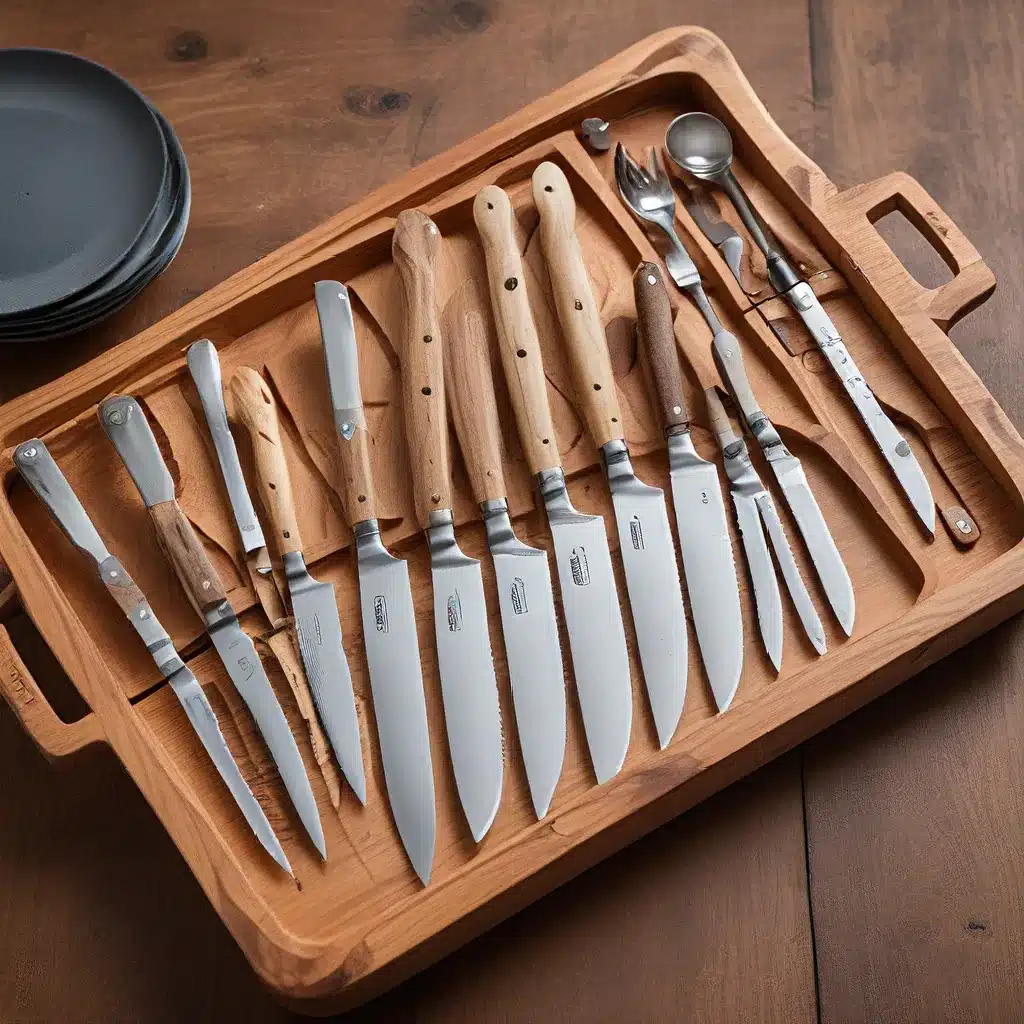
As a seasoned home chef, I know the importance of keeping my trusty knives in tip-top shape. After all, a sharp, well-maintained blade can make all the difference in the kitchen, from effortlessly slicing through tender meats to dicing vegetables with precision. But maintaining your knives is about more than just sharpening—it’s about proper care and storage, too. In this comprehensive guide, I’ll share my personal insights and practical tips to help you extend the life of your beloved cutlery.
Proper Knife Washing and Drying
The first and most crucial step in preserving your knives is to keep them clean and dry. Sounds simple, right? Well, there’s a bit more to it than just a quick rinse.
According to the experts at Town Cutler, you should always hand-wash your knives with warm, soapy water. Avoid abrasive sponges or scrubbers, as these can dull the blade over time. Once washed, make sure to dry your knife completely using an absorbent towel. Paper towels work great for this.
You should never put your knives in the dishwasher or leave them soaking in water. The high heat and harsh detergents can damage the blade, while prolonged exposure to moisture can lead to corrosion and rust. Trust me, it’s worth the extra few minutes of handwashing to keep your knives in pristine condition.
Protecting Carbon Steel Blades
Now, if you’re the proud owner of some carbon steel knives, you’ll need to take a few extra precautions. Carbon steel is particularly reactive to acidic foods like citrus, tomatoes, and onions. If you don’t properly rinse and dry your blade after using it on these items, the acid can start to corrode the steel, causing damage over time.
The folks at Town Cutler recommend rinsing your carbon steel knife and wiping it dry immediately after use. But don’t stop there—they also suggest oiling the blade with a food-safe knife wax or neutral oil, like camellia oil, to create a protective barrier. This helps guard against future exposure to moisture and acids.
When applying the oil, be sure to use a pea-sized amount and distribute it evenly from the spine to the edge of the blade. And remember, do not directly touch the edge with your fingers when oiling—use a thick towel instead. This will help keep your razor-sharp edge intact for longer.
Proper Knife Storage
Now that your knives are clean, dry, and protected, it’s time to think about storage. Where and how you keep your blades can have a significant impact on their longevity.
As the Epicurious article points out, magnetic knife strips are a popular and visually appealing storage solution. They keep your blades easily accessible while showcasing your collection. However, in smaller kitchens with limited wall space, this may not be an option.
That’s where knife protectors come in handy. These sturdy, plastic sleeves envelop each individual blade, shielding them from bumps, scratches, and dings that can dull the edge. I personally use the Noble Home & Chef Universal Knife Edge Guards, which are made of durable ABS plastic and lined with felt to keep my knives safe and sharp in my drawer.
One important thing to consider when using knife protectors is size compatibility. Make sure to measure your blades and select guards that will fit snugly, preventing the knives from sliding around and potentially scratching the surface.
Maintaining a Sharp Edge
Of course, no discussion of knife care would be complete without addressing sharpness. A sharp knife is not only more efficient but also safer to use than a dull one, as it requires less force to make clean cuts.
According to Knives Illustrated, it’s a good idea to have your knives professionally sharpened at least once a year, even if you’re regularly honing them at home. Professional sharpening services use specialized tools and techniques to achieve a finer, more consistent edge than most home cooks can.
In between professional sharpenings, you can use a honing rod to help maintain the edge. Honing rods don’t actually sharpen the blade; instead, they realign the microscopic bits of steel, ensuring a smooth, even cutting edge. Just be sure to use the rod correctly, with gentle, controlled strokes.
Never put your knives in a dishwasher or use an electric sharpener, as these methods are often too abrasive and can potentially damage the blade. Stick to hand-washing, honing, and periodic professional sharpening for the best results.
Embracing the Patina on Carbon Steel
One final note on carbon steel knives: as they age, you may notice a natural darkening or “patina” developing on the blade. This is not a sign of damage, but rather a protective layer that forms as the steel reacts with the oils and acids it encounters during use.
The experts at Town Cutler explain that this patina can actually help preserve the blade and maintain its sharpness over time. While you can keep the blade polished and shiny if you prefer, I actually find the gradual development of a patina to be quite beautiful and characteristic of a well-used, well-loved chef’s knife.
Conclusion: Investing in the Life of Your Knives
Caring for your knives may seem like a chore, but I assure you, it’s a worthwhile investment. By following these simple tips for proper washing, drying, storage, and sharpening, you can dramatically extend the life of your beloved cutlery. And for those of you with carbon steel blades, a little extra care and maintenance will help preserve their unique character and performance.
Remember, a sharp, well-maintained knife is not only a joy to use but also a safer tool in the kitchen. So take the time to show your knives a little love, and they’ll reward you with years of reliable, high-quality performance. Your knives are an extension of you in the kitchen – treat them with care, and they’ll serve you well for a lifetime.


